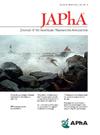过程标准化遇到标签表征门诊护理药师活动。
IF 2.5
4区 医学
Q3 PHARMACOLOGY & PHARMACY
Journal of the American Pharmacists Association
Pub Date : 2025-03-28
DOI:10.1016/j.japh.2025.102396
引用次数: 0
摘要
背景:电子病历(EMR)中药剂师提供的患者护理活动的结构化文档对于记录、连续性、计费和收集临床结果数据至关重要。在图表注释中,遇到原因字段允许多个半结构化或自由文本条目来描述患者交互的目的。如果没有标准化,没有额外的图表审查,原因条目就不能汇集在一起进行分析。目的:主要目的是通过标准化门诊护理药剂师遭遇标签来增加遭遇原因领域的效用,并为跨大型学术卫生系统采用提供模板。由此产生的结构化数据旨在更好地表征药剂师在个人、诊所和系统层面的活动。方法:一份报告收集了4个初级保健机构药师遭遇的原因条目。经过审查,门诊护理药剂师工作组创建了一个程序,以输入遇到的原因,需要输入的适应症和行动或药剂师服务。药剂师在8月份接受了有关新程序的培训。2022年9月至11月重复了一份实施后报告。使用描述性统计分析遇到原因条目的存在和描述,并在实施前后进行比较。结果:实施前,18.6% (n=370)的总就诊有未定义就诊指征或药师活动的通用条目。实施后,通用条目下降到3.9% (n=88)。排除抗凝偶遇后,无原因偶遇从26.8% (n=252)下降到12.1% (n=123)。从实施前到实施后,所标记的接触次数、独特患者数量和疾病状态没有显著变化。结论:实施一种标记遭遇原因的程序,允许在药剂师实践中使用一致的数据对药剂师服务进行更有力的表征。这种方法可能对具有有限分析资源的药剂师实践有用,用于更复杂的服务指标和仪表板。本文章由计算机程序翻译,如有差异,请以英文原文为准。
Process standardization of encounter labeling to characterize ambulatory care pharmacist activity
Background
Structured documentation of pharmacist-provided patient care activities within the electronic medical record is crucial for recording, continuity, billing, and collecting clinical outcome data. In chart notes, the encounter reason field allows multiple semistructured or free-text entries to describe the purpose for a patient interaction. Without standardization, reason entries could not be pooled for analysis without additional chart review.
Objective
The primary aim was to increase the utility of the encounter reason field by standardizing ambulatory care pharmacist encounter labeling and provide a template for adoption across a large academic health system. The resulting structured data are intended to better characterize pharmacist activity at individual, clinic, and system levels.
Methods
A report collected encounter reason entries for pharmacist encounters in 4 primary care settings from April to June 2022. After the review, an ambulatory care pharmacist workgroup created a procedure for entering encounter reason, requiring entry of both an indication and an action or pharmacist service. Pharmacists were trained on the new procedure in August. A post-implementation report was repeated for September-Nov 2022. Presence and description of encounter reason entries were analyzed with descriptive statistics and presented for comparison between pre- and postimplementation.
Results
Pre-implementation, 18.6% (n = 370) of total encounters had a generic entry that did not define the visit indication or the pharmacists' activity. Post-implementation, generic entries decreased to 3.9% (n = 88). After exclusion of anticoagulation encounters, the number of encounters with no reason decreased from 26.8% (n = 252) to 12.1% (n = 123). The number of encounters, unique patients, and disease states labeled did not change significantly from pre-to post-implementation.
Conclusion
Implementation of a procedure for labeling encounter reason allowed for more robust characterization of pharmacist services using congruent data across pharmacist practices. This approach may be useful for pharmacist practices with limited analytics resources for more sophisticated service metrics and dashboards.
求助全文
通过发布文献求助,成功后即可免费获取论文全文。
去求助
来源期刊
CiteScore
3.30
自引率
14.30%
发文量
336
审稿时长
46 days
期刊介绍:
The Journal of the American Pharmacists Association is the official peer-reviewed journal of the American Pharmacists Association (APhA), providing information on pharmaceutical care, drug therapy, diseases and other health issues, trends in pharmacy practice and therapeutics, informed opinion, and original research. JAPhA publishes original research, reviews, experiences, and opinion articles that link science to contemporary pharmacy practice to improve patient care.

 求助内容:
求助内容: 应助结果提醒方式:
应助结果提醒方式:


